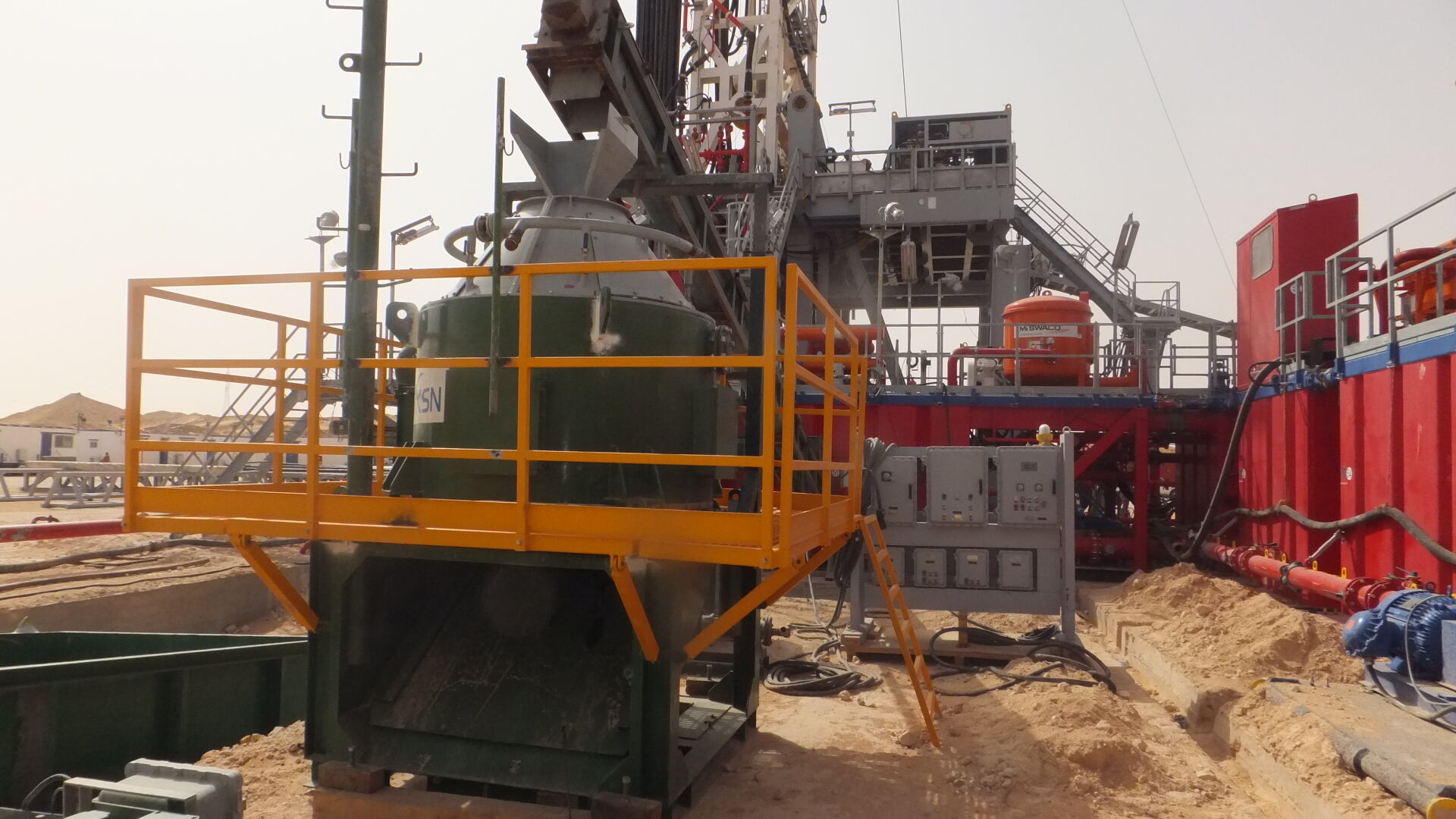Қазіргі қазба қалдықтарымен жұмыс істеуді түрлендіретін негізгі жабдықтар
Қазба қалдықтарын басқару қазба қалдықтары технологиялық даму мен қоршаған ортаны қорғау бойынша қатаң ережелерге сәйкес әлдеқайда дамып отыр. Қазіргі қазу операциялары қалдықтарды тиімді түрде өңдеуге, өңдеуге және тасымалдауға арналған күрделі жабдықтарға сүйенеді, сонымен қатар қоршаған ортаға әсерін азайтады. Бұл кеңістік қазіргі заманғы қазба қалдықтарын басқару жүйелерінде қолданылатын жаңа жабдықтар мен олардың тұрақты дамуға қалай үлес қосатынын қарастырады.
Негізгі қалдықтарды өңдеу жабдықтары
Сланец сүзгіштер мен тербеліс сүзгіштері
Ұңғы қалдықтарын басқару жабдықтарының алдыңғы қатарында сланец сүзгіштер мен тербеліс сүзгіштері тұрады. Бұл механикалық құрылғылар қатты заттарды басқару жүйелерінде сұйықты ұнтақтан бөліп таратудың алғашқы кезеңі болып табылады. Қазіргі заманғы сланец сүзгіштер бөлшектердің дәл өлшемін бөліп алу мен сұйықтықты қалпына келтірудің тиімділігін арттыру үшін көп деңгейлі конфигурациясы бар күрделі тор сүзгілерді пайдаланады. Жабдықтың жоғары жиілікті тербеліс механизмдері құнды сұйықтықтардан қатты заттарды бөліп алу тиімділігін арттыруға кепілдік береді.
Сүзгіштің жобалауындағы соңғы жаңалықтар автоматтандырылған тор керілу жүйелері мен қозғалысты басқаруды жақсартуға әкелді, нәтижесінде тордың қызмет ету мерзімі ұзарды және жабдықты ұстау талаптары азайды. Бұл жетістіктер ұңғы қалдықтарын басқару процесстерінің жұмыс өнімділігін біршама арттырды және тоқтап тұру уақытын азайтты.
Центрифугалар мен декантаторлар
Центрифугалды бөліп алу технологиясы қазіргі таңда ұңғы қалдықтарын басқару жабдықтары жүйесінде маңызды рөл атқарады. Жоғары жылдамдықты центрифугалар мен декантаторлар ұңғы сұйықтарынан ұсақ бөлшектерді бөліп алу үшін орталықтан тепкіш күшті пайдаланады, бұл дәстүрлі ауырлық күшіне негізделген әдістерге қолжетімді емес бөліп алу процесін орындайды. Осындай күрделі машиналар үлкен көлемдегі ұңғы қалдықтарын өңдеуге және жоғары бөлу тиімділігін сақтауға қабілетті.
Қазіргі центрифугалар өзгермелі жылдамдық жетегімен және автоматтандырылған басқару жүйелерімен жабдықталған, бұл операторларға қалдық сипаттамаларына сәйкес өнімділікті тиімді қылуға мүмкіндік береді. Соңғы модельдер тозуға тұрақты материалдар мен дамып жетілдірілген мойынтіректер жүйесін қолданылады, қиын жағдайдағы ұңғы жұмыстарында сенімді жұмыс істеуін қамтамасыз етеді.

Кеңейтілген Тәрбиелеу Технологиялары
Термиялық десорбциялық қондырғылар
Жылу десорбциясы жабдығы - бұрғылау қалдықтарын басқару жабдықтары технологиясындағы маңызды жетістік болып табылады. Бұл қондырғылар бұрғылау қиындыларынан көмірсутектерді бөліп алу үшін бақыланатын жылу әдістерін қолданады, құнды майлыларды қалпына келтіруге және таза, қайта пайдалануға болатын қатты заттар алуға мүмкіндік береді. Қазіргі заманғы жылу десорбциясы жүйелері қоршаған ортаға талаптарға сәйкес болу үшін энергияны үнемдеу әдістері мен күрделі шығарындыларды бақылау жүйелерін қамтиды.
Соңғы жылу десорбциясы қондырғылары автоматтандырылған жүктеу жүйелері мен үздіксіз бақылау мүмкіндіктерінен тұрады, ол өңдеу шарттарын және тұрақты сапалы өңдеуді жүзеге асыруға мүмкіндік береді. Бұл жүйелер әртүрлі қалдық ағындарымен жұмыс істей алады және қоршаған ортаның қатаң стандарттарын сақтай отырып, жоғары өңдеу тиімділігіне қол жеткізеді.
Химиялық өңдеу жүйелері
Қазіргі таңда қазу қалдықтарын басқарудың химиялық өңдеу жабдықтары барынша күрделі болып табылады. Бұл жүйелер қазу қалдықтарын тұрақтандыру мен өңдеуді тиімді жүргізу үшін дәл дозалау механизмдері мен араластыру технологияларын пайдаланады. Автоматтандырылған химиялық енгізу жүйелері өңдеу химикаттарының дәл дозасын қамтамасыз етеді, ал күрделі араластыру жабдықтары қалдық ағынының барлығына біркелкі өңдеу жасайды.
Қазіргі заманғы химиялық өңдеу жүйелеріне нақты уақытта бақылау мүмкіндіктері мен автоматтандырылған басқару жүйелері енгізілген, олар операторлардың химикаттардың тұтынуын азайта отырып, өңдеудің тиімді жағдайларын сақтауына мүмкіндік береді. Бұл жетістіктер өңдеу тиімділігін біршама арттырды және жұмыс шығындарын азайтты.
Сақтау мен ұстау шешімдері
Алдыңғы қатарлы сақтау резервуарлары
Қазіргі тау-кен қалдықтарын басқару жабдықтары қауіпсіз және тиімді қалдықтарды ұстау үшін күрделі сақтау шешімдерін қамтиды. Дамыған сақтау резервуарлары коррозияға тұрақты материалдардан жасалған, деңгейді бақылау автоматтандырылған жүйелері мен интеграцияланған араластыру мүмкіндіктеріне ие. Бұл резервуарлар қоршаған ортаны қорғау және нормативтік талаптарға сәйкестік екінші контурлы сақтау жүйелері мен күрделі шығын шығару механизмдерімен жабдықталған.
Соңғы сақтау шешімдері тасымалдау мен орнату жеңілдігі үшін модульдік конструкцияларды енгізеді, сонымен қатар ұзақ мерзімді сенімділік үшін мықты құрылысты сақтайды. Қаптау технологиялары мен материалдар ғылымындағы жаңалықтар резервуарлардың қызмет ету мерзімін ұзартты және жөндеу талаптарын азайтты.
Автоматтандырылған тасымалдау жүйелері
Әлдеқайда қарапайым және тиімді қалдықтарды тасымалдау жүйелері қазіргі таңдағы қазба қалдықтарын басқару жабдықтарының негізгі құрамдас бөліктері болып табылады. Бұл жүйелер қалдық материалдарды өңдеудің әртүрлі кезеңдері арасында қауіпсіз тасымалдау үшін жетілдірілген сорғылау технологиясы мен автоматтандырылған басқару жүйелерін пайдаланады. Қысымды оң орын ауыстыру сорғылары мен күрделі құбыр өткізу жүйелері құйылу немесе ағып кету қаупін азайта отырып, сенімді қалдықтарды тасымалдауды қамтамасыз етеді.
Қазіргі таңдағы тасымалдау жүйелері операторлардың қалдықтардың орын ауыстыруын бақылауға және пайда болуы мүмкін жағдайларға жедел әрі уақытылы жауап қайтаруға мүмкіндік беретін біріктірілген қауіпсіздік механизмдері мен бақылау мүмкіндіктерін қамтиды. Жетілдірілген материалдар мен инновациялық шешімдер жүйенің тұрақтылығын арттырса, жабдықтарды қажет ететін техникалық қызмет көрсету көлемін азайтады.
Бақылау және бақылау жүйелері
Нақты уақыт режиміндегі бақылау жабдықтары
Қазіргі заманғы бұрғылау қалдықтарын басқару жүйесінің тиімді жұмыс істеуі үшін күрделі бақылау құрылғыларына сүйенеді. Берілген құрылғылар қалдықтардың құрамы, өңдеу тиімділігі және құрылғылардың жұмыс істеу көрсеткіштері сияқты негізгі параметрлерді нақты уақыт режимінде бақылайды. Бұл жүйелер операторларға дұрыс шешім қабылдау және нормативтік сәйкестікті сақтау үшін маңызды деректер береді.
Соңғы бақылау құрылғыларында сымсыз байланыс мүмкіндіктері мен бұлтты деректерді басқару жүйелері кіреді, олар қалдықтарды басқару процесстерін алыстан бақылау мен талдау мүмкіндігін береді. Кеңейтілген талдау құралдары арқылы тенденциялар анықталып, жүйенің өнімділігі тиімділенеді.
Автоматты басқару жүйелері
Автоматтандырылған басқару жүйелері қазіргі таңдағы құрғақ қалдықтарды басқару жабдықтарының миы болып табылады. Бұл күрделі жүйелер бірнеше компоненттерді біріктіріп, өнімділікті арттыра отырып, қауіпсіздікті және сәйкестікті қамтамасыз ететін жұмыс істейді. Деректерді бақылау негізінде жабдықтың параметрлерін нақты уақытылы реттеуге мүмкіндік беретін күрделі басқару алгоритмдері өңдеу жағдайларын тиімді ұстап тұрады.
Қазіргі басқару жүйелерінде операторларды оқыту мен құқықтық талаптарға сәйкес құжаттарды дайындауды жеңілдететін, пайдаланушыға ыңғайлы интерфейстер мен толық есеп беру мүмкіндіктері бар. Алыстағы қол жеткізу мүмкіндіктері сарапшылардың қолдау көрсетуіне және ақауларды жөндеуге жергілікті түрде қатыспай-ақ мүмкіндік береді.
Жиі қойылатын сұрақтар
Құрғақ қалдықтарды басқару жабдықтары қаншалықты ұдайы техникалық қызмет көрсетуі тиіс?
Кәдімгі техникалық қызмет көрсету кестесі құрылғылардың түріне байланысты әртүрлі болады, бірақ әдетте күнделікті тексеру, апталық алдын алу шаралары мен ай сайынғы жан-жақты бағалау кіреді. Құмтастардың тербеліс сүзгілері мен центрифуганың подшипниктері сияқты маңызды компоненттер жиірек назар аударуды талап етеді. Өндірушінің ұсынған техникалық қызмет көрсету кестесін сақтау құрылғылардың үздіксіз жұмыс істеуі мен ұзақ қызмет етуі үшін маңызды.
Қазба қалдықтарын басқару құрылғыларын таңдауға қандай факторлар әсер етеді?
Құрылғыларды таңдау қалдық көлемі мен сипаттамалары, нормативтік талаптар, алаң жағдайлары және операциялық шектеулер сияқты әртүрлі факторларға тәуелді. Басқа да ескеретін жағдайларға өңдеу қуатының талаптары, қолжетімді кеңістік, мобильділік қажеттіліктері және бар жүйелермен интеграция кіреді. Осы факторларды жан-жақты бағалау нақты қолдануға сәйкес келетін құрылғыларды таңдауға кепілдік береді.
Қазба қалдықтарын басқару құрылғылары қалай қоршаған ортаны қорғау талаптарына сәйкестікті арттыра алады?
Қазіргі таңдағы тесу қалдықтарын басқару жабдықтары қалдықтарды тиімді өңдеу және ластануды азайту үшін жетілдірілген технологияларды қолданады. Тұйық циклды жүйелер, шығарындыларды бақылау және дәл өңдеу мүмкіндіктері сияқты қасиеттер экологиялық реттеу талаптарын орындау немесе олардан асып түсуіне көмектеседі. Сонымен қатар, кезең-кезеңмен бақылау мен құжаттандыру мүмкіндіктері талап етілетін есеп беру мен тексеруді жеңілдетеді.

